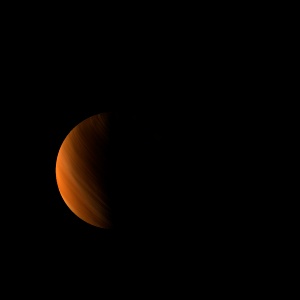|
|
Space Astro
|
Info for exoplanet "Destungr Gaeon"
| Scientific (actual) data |
|---|
| Name | HD 103949 b |
| Planet status | Confirmed |
| Mass sini | 0.0352 |
| Orbital period | 120.878 |
| Semi major axis | 0.439 |
| Orbit eccentricity | 0.19 |
| Discovered | 2019 |
| Updated | 2019-04-26 |
| Omega | 127.74 |
| K | 1.77 |
| Publication | Published in a refereed paper |
| Detection type | Radial Velocity |
| Mass measurement type | Radial Velocity |
| Star name | HD 103949 |
| Right ascension | 179.55° |
| Declination | -23.92° |
| Star distance | 26.52 |
| Star mass | 0.77 |
| Star sp type | K3V |
| Star temperature | 4792 |
| Wikipedia article | HD 103949 b |
Back
| |
| Fictional info (?) |
|---|
| Suggested name | Destungr Gaeon |
| Planet type | Cold planet |
|
| Atmosphere | Ethane | 71% |
| Hydrogen chloride | 28% |
| Sulfur dioxide | 0.18% |
| Atmospheric pressure | 1.2 bar |
 |
| No known satellites |
| Google search for Destungr gaeon |
|
Website by Joachim Michaelis
|
|
|
|